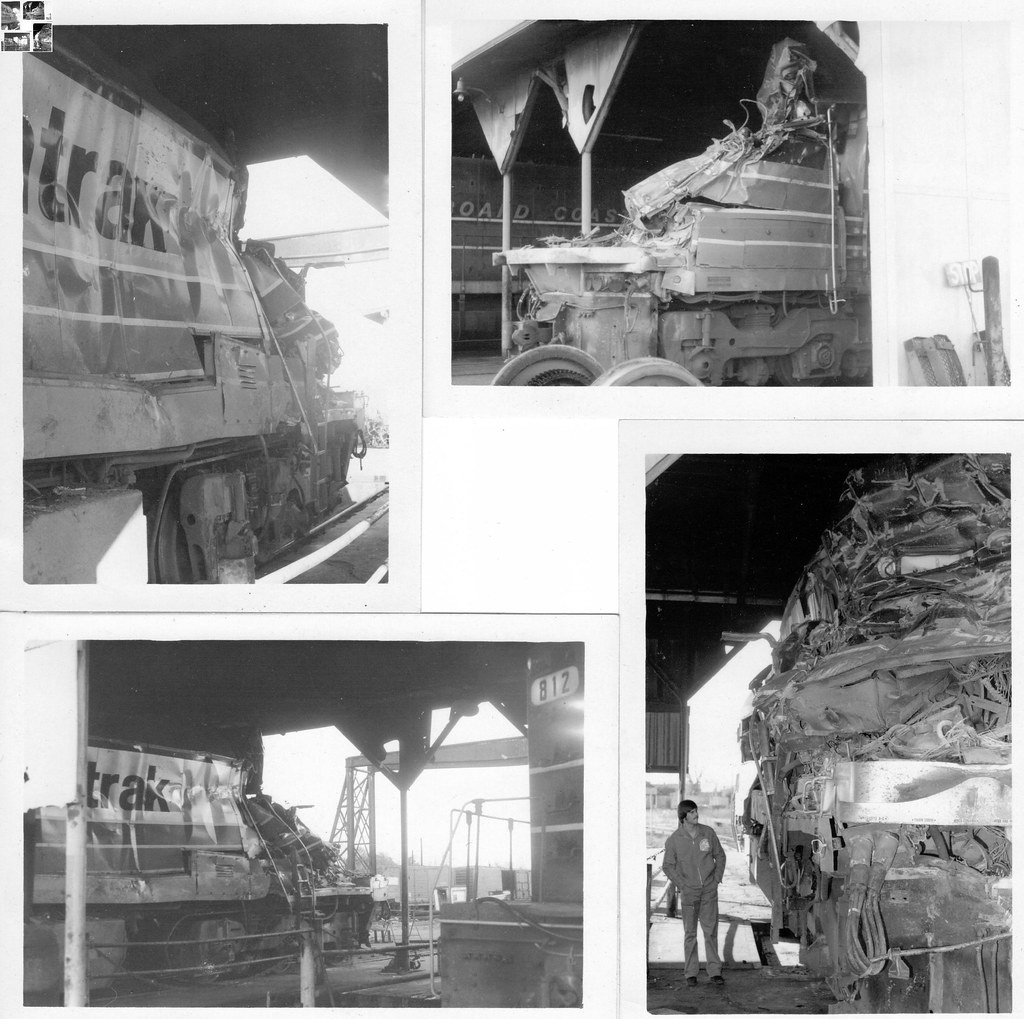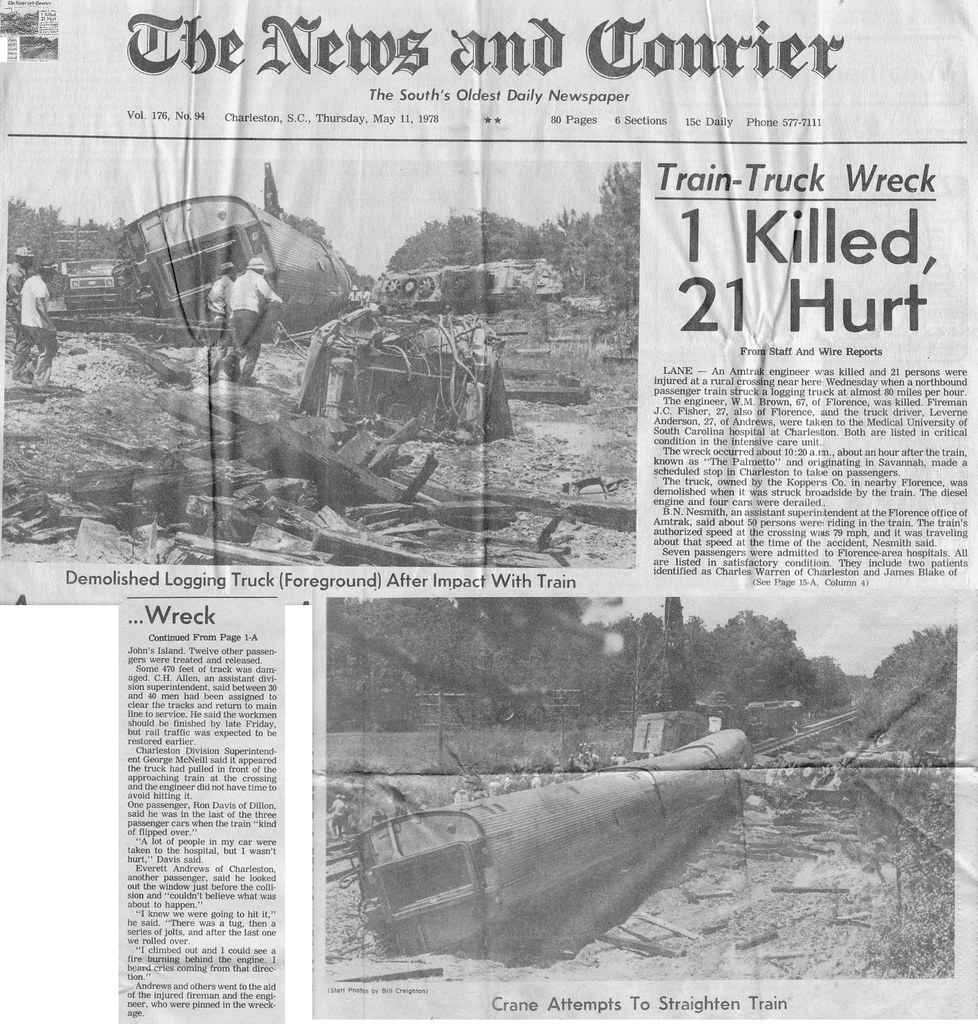Hello All,
Im hoping another Amtrak fan out there can help me out:
I'm in the process of scanning my recently passed father's slide archives, and I came across several slides of a wrecked Amtrak #713 [P30CH] locomotive at Florence, SC. (along with slides of a wrecked AutoTrain Buffet Car #596 from a derailment on February 24, 1978)
The photos may be seen here:
SCL Florence, SC - 26 March 1978
The date on all the slides is March 26, 1978, with one slide of the builders plate and the date "12-6-1977" is written with a finger in the grime of the loco under the builders plate (date of accident?). My father's notes on the images state that the engineer and fireman were both killed in the collision.
I don't believe the Amtrak loco was involved in the AutoTrain derailment, and both wrecked pieces of equipment are in the Seaboard Coast Line's Florence, SC Yard by coincidence.
The only info I've been able to locate so far on the Amtrak loco is on someone elses image of the loco in service: but someone added that the loco was wrecked in a collision with a log truck in Sellers, NC.
There is no Sellers in North Carolina, but there is a Sellers, South Carolina with the Seaboard Coast Line main running right through town and crossing several main thoroughfares.
I've researched the NTSB archives, and there is no entry for this accident which is more than shocking if in fact there were fatalities (but the AutoTrain derailment is covered in detail and incurred no fatalities!?!)
So, I'm hoping someone out there can:
This info is strictly for a description under the images, on a railfan photo websites I use: NERAIL North American Railroad Photo Archive and a semi-private group: North American Railfans Almanac on facebook.
I will of course be more than pleased to give credit to those persons contributing info.
Best Wishes, and Happy Holidays!
Philip M. Goldstein
bed14 at aol.com
Im hoping another Amtrak fan out there can help me out:
I'm in the process of scanning my recently passed father's slide archives, and I came across several slides of a wrecked Amtrak #713 [P30CH] locomotive at Florence, SC. (along with slides of a wrecked AutoTrain Buffet Car #596 from a derailment on February 24, 1978)
The photos may be seen here:
SCL Florence, SC - 26 March 1978
The date on all the slides is March 26, 1978, with one slide of the builders plate and the date "12-6-1977" is written with a finger in the grime of the loco under the builders plate (date of accident?). My father's notes on the images state that the engineer and fireman were both killed in the collision.
I don't believe the Amtrak loco was involved in the AutoTrain derailment, and both wrecked pieces of equipment are in the Seaboard Coast Line's Florence, SC Yard by coincidence.
The only info I've been able to locate so far on the Amtrak loco is on someone elses image of the loco in service: but someone added that the loco was wrecked in a collision with a log truck in Sellers, NC.
There is no Sellers in North Carolina, but there is a Sellers, South Carolina with the Seaboard Coast Line main running right through town and crossing several main thoroughfares.
I've researched the NTSB archives, and there is no entry for this accident which is more than shocking if in fact there were fatalities (but the AutoTrain derailment is covered in detail and incurred no fatalities!?!)
So, I'm hoping someone out there can:
- confirm or correct the date of the accident,
- time of accident,
- whether in fact the engineer & fireman was k.i.a.
- any other info they have
This info is strictly for a description under the images, on a railfan photo websites I use: NERAIL North American Railroad Photo Archive and a semi-private group: North American Railfans Almanac on facebook.
I will of course be more than pleased to give credit to those persons contributing info.
Best Wishes, and Happy Holidays!
Philip M. Goldstein
bed14 at aol.com
Last edited by a moderator:






